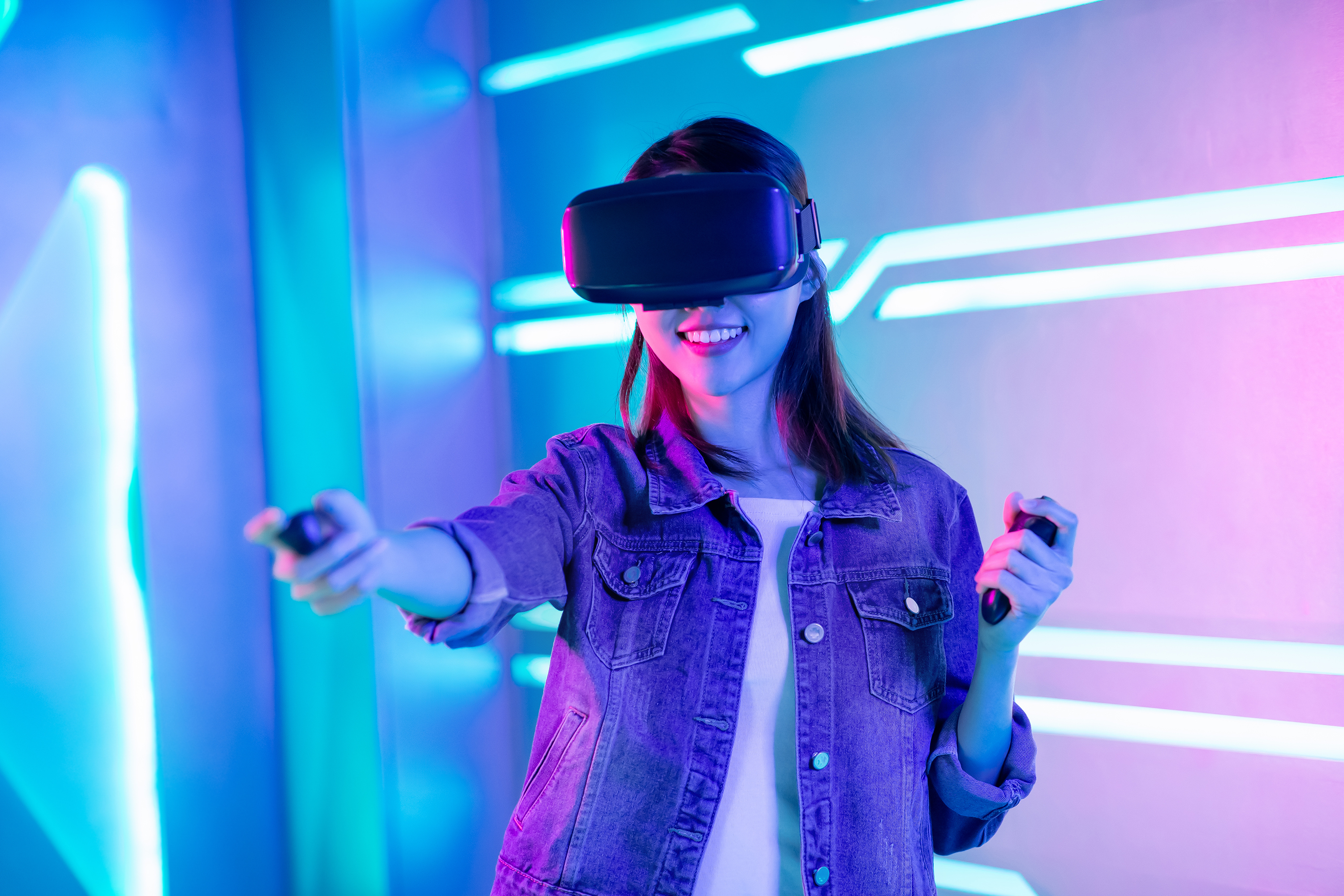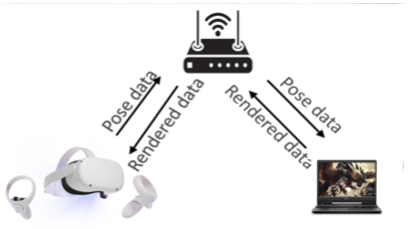Wi-Fi 7 brings advanced Wi-Fi® performance to the next era of connected devices. In this new blog series, we’ll explore how Wi-Fi 7 enables innovation across various market segments.

Extended Reality (XR) refers to the technologies designed to bridge the gap between the physical and virtual worlds. XR technologies, which include augmented reality (AR), virtual reality (VR), and mixed reality (MR), allow users to connect with their environments and each other in new ways by combining virtual effects with real-world applications to deliver enhanced interactions and immersion. XR devices support a wide range of use cases, including gaming and entertainment, social, enterprise, education, immersive 3-D training, industrial usage, and many more. Wi-Fi® is perfectly positioned to support the high throughputs and low latency that XR applications require and also plays a critical role in ensuring a reliable, engaging user experience while delivering long-lasting battery life for XR devices.
Navigating the complexities of XR
Designing applications for XR presents a unique set of challenges. XR demands significant data transfers and must meet strict latency requirements, particularly for latency-sensitive data such as sensor or Inertial Measurement Unit (IMU) inputs, which must be delivered with minimal delay to match human brain perception. Many XR devices are wearable, including Head Mounted Displays (HMDs), glasses or goggles, and hand-held controllers. These devices must operate with high power efficiency to ensure extended battery life while also managing thermal constraints. And from a broader perspective, it is important to understand that Wi-Fi networks must contend with growing traffic due to an increasing number of users and devices.
Wi-Fi 7 optimizes XR experiences
The latest Wi-Fi technology, Wi-Fi 7, delivers an unprecedented level of connectivity through an impressive list of new features that address the challenges of latency-sensitive devices and support a wide variety of cutting-edge XR use cases.
Specifically, Wi-Fi 7’s Multi-Link Operation (MLO) allows multiple channels to be used concurrently. The diversity in multiple-channel access greatly reduces Wi-Fi latency, especially in congested environments, and significantly improves Wi-Fi throughput. MLO benefits are greatest when 5 GHz and 6 GHz are both leveraged, making it a critical feature to enable low-latency, high-throughput XR applications.
The benefits of Wi-Fi 7 are especially apparent in VR gaming as players experience a truly immersive, first-person perspective of in-game action. Participants can both experience and influence the game environment through a variety of VR gaming devices and accessories including HMDs and sensor-equipped hand controllers. VR games can be played individually, with multiple players, or in large online communities using specialized game consoles or advanced PCs serving as companion compute devices. When a PC serves as a companion compute device, the data exchange between the HMD and PC can be highly latency-sensitive as increased latency will result in compromised visual quality, more video lagging, and unresponsiveness in hand gesture movements. MLO provides significantly improved throughput and low Wi-Fi latency and jitter for a smoother, more responsive XR user experience.
In addition to MLO, the heightened modulation of 4K QAM increases data rates by 20%, and the wider channels of 320 MHz increase data rates by 100%. Higher data rates result in shorter transmission times, which can lead to less power consumption and longer battery life. Wi-Fi 7 also provides additional optimization features such as Triggered Uplink Access, which enables deterministic transmission to reduce transmission jitter, and Multiple Resource Units to a single STA, which maximizes network channel bandwidth utilization. Both features improve XR device performance in high-density environments.

PC Rendering VR Gaming
Aside from gaming, VR devices are also used in the new era of remote and hybrid work to assist in collaboration and work productivity, giving employees, customers, and IT end users a truly immersive work experience. When deployed in a high-density environment such as a large office building, the mutual interference from multiple XR devices may significantly degrade the user experience. In these environments, optimized Triggered Uplink Access and Multiple Resource Units to a single STA can greatly improve XR performance through smart Orthogonal Frequency Division Multiple Access (OFDMA) scheduling and interference avoidance.
W-Fi 7 also provides the latest Wi-Fi CERTIFIED WPA3™ security to further enhance XR devices' security, including stronger key management, as well as beacon protection – a mechanism that allows a device to cryptographically verify the contents of beacon frames transmitted by an access point, – and Wi-Fi CERTIFIED Enhanced Open™, which provides unauthenticated data encryption to users.
Wi-Fi 7 fuels the evolution of XR
XR use cases will continue to change how we work, play, learn, and connect with the world. As XR continues to evolve, we look towards a future of richer content, lighter devices, and new usage scenarios that will create a diverse XR market. Wi-Fi 7’s advanced features empower exceptional XR experiences, offering improved speed, lower latency, and better power efficiency to support the next generation of XR technology.
The statements and opinions by each Wi-Fi Alliance member and those providing comments are theirs alone, and do not reflect the opinions or views of Wi-Fi Alliance or any other member. Wi-Fi Alliance is not responsible for the accuracy of any of the information provided by any member in posting to or commenting on this blog. Concerns should be directed to info@wi-fi.org.




Add new comment